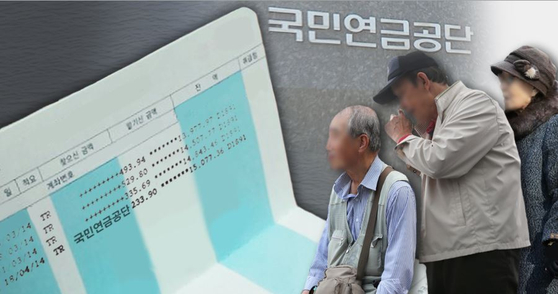Kang Soon-deok, 66, a full-time housewife living in Seogwipo City, Jeju Island, began pouring the national pension at the age of 55. After seeing her husband (72) getting a pension, she decided to pay the premium in her mid-fifties. Then, when he was in his 60s, he was guided to choose whether to find the premium he had paid for a lump sum or continue to fill the premium for my 10 years (voluntary continuation subscription), and became a voluntary continuing subscriber and paid the premium for several more years. Kang, who has completed the minimum subscription period (10 years), started receiving a pension of just over 200,000 won in October last year. Mr. Kang said, “My husband receives more than 300,000 won, so when it is combined with my pension, it is more than 500,000 won.” “I remain after paying all utility bills such as electricity and water taxes. I want to be good at signing up even late,” he said.

According to the National Pension Service on the 13th, as of the end of October last year, the number of voluntary continuing members of the national pension was counted as 53,6310, and it was confirmed that it exceeded the 500,000 mark. yunhap news
“After retirement allowance,” voluntary continuing subscribers surge 10 times
The number of people who voluntarily subscribe and pay insurance premiums even though they are not obligated to subscribe to the national pension has steadily increased year by year, reaching 1 million. In particular, the number of voluntary continuing subscribers who continue to pay insurance premiums after the age of 60, when compulsory subscription ends, exceeded 500,000 last year, increasing more than 10 times that of 10 years ago. It is interpreted as a result of reflecting the recognition that the only reliable countermeasure for retirement is the national pension despite the concern about pension depletion.

Pension related images. Central photo
According to the National Pension Service on the 13th, as of the end of October last year, the number of voluntary continuing members of the national pension was counted as 53,6310, and it was confirmed that it exceeded the 500,000 line. Like Kang, most of them continue to pay insurance premiums to qualify for a pension because they have not met the minimum subscription period of 10 years, and they choose to continue voluntarily joining in order to get more pensions by extending the subscription period. The number of voluntary continuing subscribers is increasing year by year. In 2010, it reached 40,9381, but it increased every year, surpassing the 200,000 mark to 21,9111 in 2015. After two years, it rose to 345,292 in 2017, and then after three years, it increased to 500,000 last year. Compared to 2010, it has increased more than 10 times in 10 years.
It is analyzed that amid concerns about the depletion of the national pension fund, the recognition that the national pension is stable and effective as a means of preparing for retirement spreads, and the number of people who join themselves is lined up.
350,000 voluntary subscriptions
Students, full-time housewives, soldiers, etc. have no income, so they are not obligated to join the pension, but voluntary subscribers who join themselves are also on the rise. As of the end of October last year, the number of voluntary subscribers was counted at 35,2427. After surpassing 100,000 in 2011 to 171,134, it increased to 24,582 in 2015 and 32,7723 in 2017. It seemed to decrease to 32,8727 in 2019, but it rose again to 350,000 last year.
Woo Yeon-seo (58, female) paid the national pension premium for 48 months while working from 1985 to 1988. However, after getting married in 1989, he quit his job and stopped paying insurance premiums. Woo, who did not meet the minimum subscription period to receive the national pension, had to receive money in a lump sum in 2023 when he turned 60, but he learned about the voluntary subscription system in 2016 through an introduction to the surroundings and began to pay insurance premiums again. Can be filled.
Compared to the personal pension, the point that attracts housewives is that the national pension is a lifetime pension that allows you to receive a lifetime salary after the age of 65, and the yield is higher than any other product. The biggest strength is that the inflation rate is reflected every year. In order to preserve real value, the pension amount is raised every year by the rate of change in consumer prices nationwide in the previous year. The payment of survivors’ pension when a member dies is different from private pension. Woo also said, “I put 90,000 won each as the minimum amount, but if I receive about 200,000 won later, I will use it for living expenses.” There is also a personal pension (private pension), but the national pension comes up to the point of death, and even if it dies, the survivors’ pension is available, so I think it will help the family.”
As a result of this, the number of subscribers combined with voluntary and continuing voluntary subscribers reached 880,8737 as of the end of October last year, reaching 900,000. Kim Yong-ha, a professor at Soonchunhyang University’s IT Department of Financial Management, said, “As the population decreases, the number of subscribers will decrease overall. He said, “I have the ability to pay, but it is not subject to compulsory subscription, but it is opening the way for women such as housewives who are in blind spots due to institutional reasons.”

National Pension Service. yunhap news
Reporter Hwang Soo-yeon [email protected]
